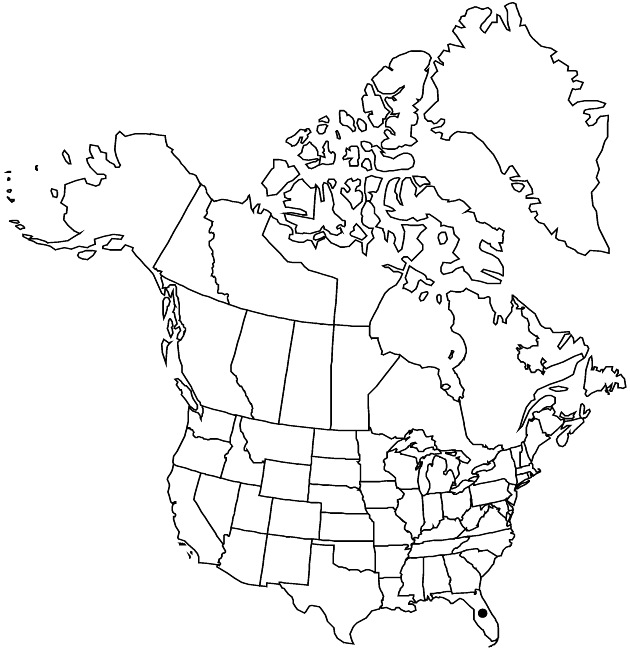Liatris garberi
Proc. Amer. Acad. Arts 15: 48. 1880.
Plants 20–80 cm. Corms elongated into rhizomes, irregularly shaped (sometimes with thickened, fibrous-roots). Stems piloso-puberulent to hirsute. Leaves: basal and proximal cauline 1-nerved, linear to linear-oblanceolate, 120–300 × 3–8 mm, gradually reduced distally to ± midstem, abruptly reduced to ± uniform bracts distally, essentially glabrous, glanddotted (margins sometimes sparsely ciliate). Heads in dense, spiciform arrays. Peduncles 0 or 1–5 (–10) mm. Involucres cylindro-campanulate, 8–10 × 4–5 mm. Phyllaries in 3–4 (–5) series, ovate to oblong-oblanceolate or oblong-lanceolate, strongly unequal, usually essentially glabrous, sometimes sparsely strigose to pilosulous, margins with hyaline borders, ciliolate, apices acute (inner with slightly subterminal, ‘rolled’ apicula), ciliolate. Florets 6–10; corolla-tubes glabrous inside. Cypselae 3–3.5 mm; pappi: lengths ± equaling corollas, bristles barbellate. 2n = 20.
Phenology: Flowering Jul–Sep.
Habitat: Wet flats with palmetto and longleaf or slash pine, oak-palmetto, pine-live oak, grass-sedge bogs, sandy loam, sandy peat
Elevation: 0–30 m
Distribution

Fla., West Indies (Bahamas)
Discussion
Selected References
None.
Lower Taxa
"barbellate" is not a number."fine" is not a number."elongated" is not a number.